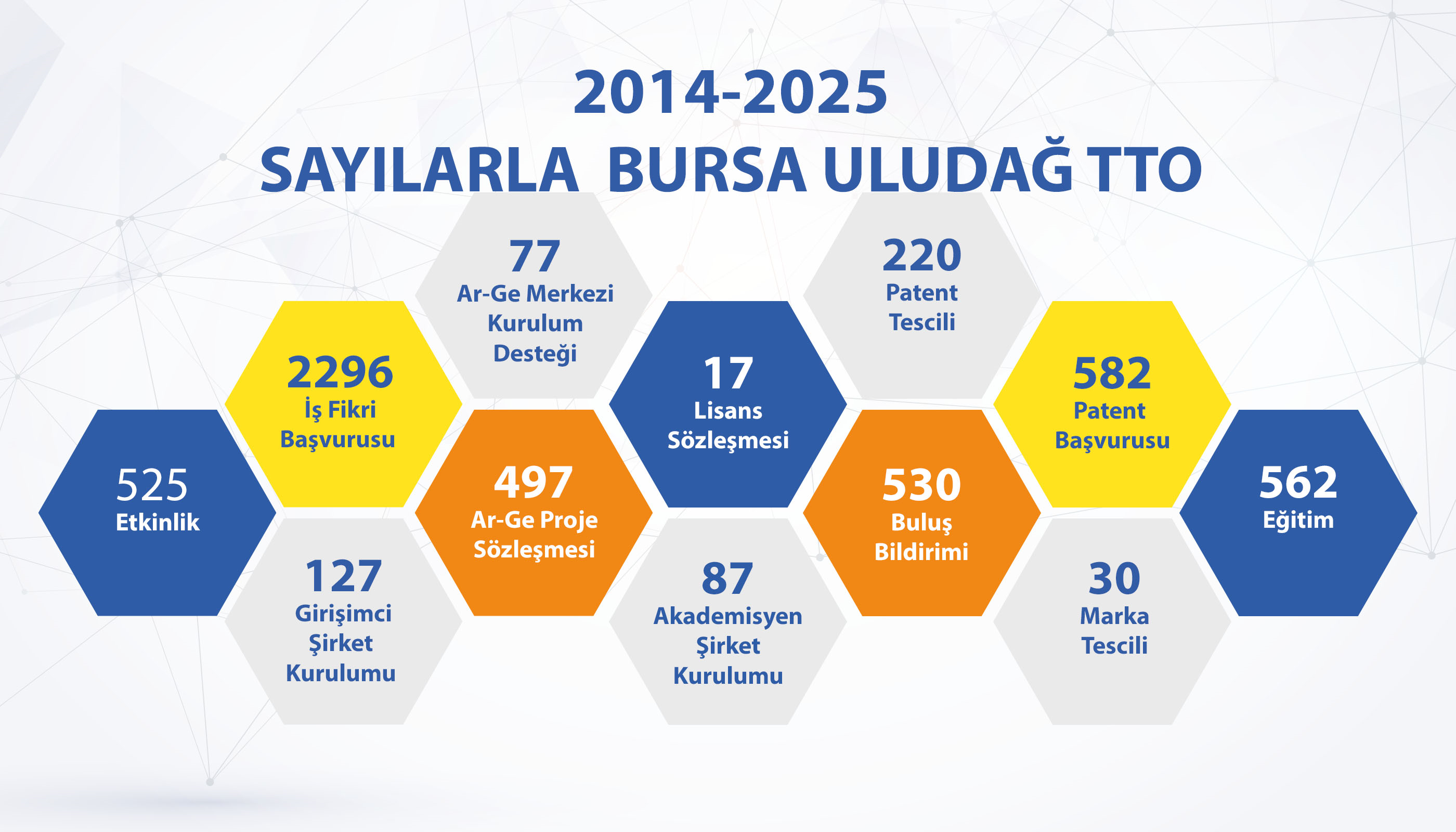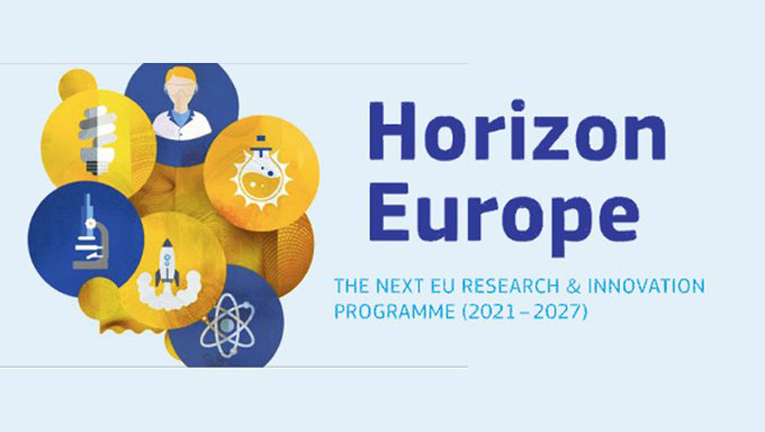
AVRUPA KOMİSYONU TARAFINDAN KÜME 5 ÇALIŞMA PROGRAMINDAKİ ENERJİ ÇAĞRILARINA İLİŞKİN YAPILAN AÇIKLAMALAR
Avrupa Komisyonu yetkilileri tarafından, 4 Şubat 2025 tarihinde kapanacak olan Küme 5- Hedef 3: Sürdürülebilir, Güvenli ve Rekabetçi Enerji Arzı ile Hedef 4: Verimli, Sürdürülebilir ve Kapsayıcı Enerji Kullanımı çağrı başlıkları altındaki bazı çağrı başlıklarına iletilen sorulara ilişkin verilen yanıtlar aşağıda bilgilerinize sunulmaktadır.
Yaklaşık 10 gün içerisinde kapanacak olan çağrılara ilişkin desteğe ihtiyacınız olması durumunda bizlerle ncpenergy@tubitak.gov.tr adresi üzerinden irtibata geçebilirsiniz.
Başvuracak tüm paydaşlarımıza başarılar dileriz.
HORIZON-CL5-2024-D3-02-02 Development of next generation synthetic renewable fuel technologies
Question: Can you please clarify if the topic in object allows the use of Glycerol (anodic reaction for formate production), other than biogenic CO2 (cathodic reaction for ethanol production), in the reactor, in order to reduce the energy consumption in the full process and fulfil the targets or cost-efficiency and energy efficiency, which also impact the GHG emissions and sustainability of the process. The use of crude glycerol will also entail the production of an additional e-fuel from our reactor (Formate), other than Ethanol, which can also be used in Fuel Cells.
On the other hand, during the production of biodiesel and Sustainable Aviation Fuels, SAFs crude glycerol is produced as a side product, thus, our technology could exploit and valorise such a waste. Moreover, glycerol (in the form of crude glycerine) is one of the feedstocks for Advanced Fuels (a form of Sustainable Aviation Fuels, SAFs), which are different from the Synthetic aviation fuels, also known as renewable fuels of nonbiological origin (RFNBOs), based on this article of the EU Commission: https://www.europarl.europa.eu/RegData/etudes/ATAG/2022/729333/EPRS_ATA(2022)729333_EN.pdf.
-
Reply: Biomass per se is not an intended source in this topic, although it cannot be strictly excluded. For example biogenic CO2 is in scope, but the focus is on its synthesis with renewable hydrogen and renewable energy rather than on extracting this CO2 from biomass. In this process crude glycerol when produced from biodiesel or SAF as a side stream is of biogenic origin, and thus it cannot be used in this topic, although it is a valuable source as an intermediate bioenergy carrier which can be further upgraded to SAF. Fossil glycerol is not renewable and thus not in scope. Please note that we had a previous topic on next generation advanced biofuels technologies , i.e., HORIZON-CL5-2023-D3-02-07: Development of next generation advanced biofuel technologies, which focused on biomass processing to advanced biofuels, and where biogenic glycerol processing could be fitted.
HORIZON-CL5-2024-D3-02-03 Development of smart concepts of integrated energy driven bio-refineries for co-production of advanced biofuels, bio-chemicals and biomaterials
The topic mentions: “An assessment of the feedstock cost supply at regional and local level and improvement of feedstock mobilization patterns……should be included”.
Question 1: Could you please specify what is considered “regional level” and what is “local level”?
-
Regional level is larger than local level and can include many neighbouring local areas.
Question 2: Regarding the “regional level”, does it have to be necessarily cross-border or can it be within the same country?
-
Regional level does not necessarily imply cross-border. For example, feedstock can be sourced from the same region in a country.
HORIZON-CL5-2024-D3-02-04 Critical technologies for the future ocean energy farms
Question: The topic mentions: “It is expected that key performance indicators are used based on international recognised metrics”. Where can be found the references of those “international recognized metrics”?
- They can be found in the webinar on the internationally agreed performance metrics organised by the European Technology and Innovation Platform : ETIP | ETIP Ocean & IEA-OES webinar: Use of internationally agreed performance metrics in project development as part of Horizon Europe Ocean Energy funding applications
HORIZON-CL5-2024-D4-02-02: Robotics and other automated solutions for construction, renovation and maintenance in a sustainable built environment (Built4People Partnership)
Question 1: What is meant by prototype?
-
Prototype under the context of topic HORIZON-CL5-2024-D4-02-02 refers to an innovative and working robotic and/or automated solution, not to a construction component.
Question 2: Should each of these prototypes be representative of both a construction and a renovation (valid for both) or if on the contrary a prototype should be focused solely on one of them (either on construction or on renovation)?
-
The topic text mentions that proposals are expected to ‘test and validate the prototyped solutions in at least three prototypes to assess the proposed approaches for a variety of buildings typologies representative of the European building stock’. The topic text also mentions that ‘testing and validation of these prototypes are expected to address both new construction and renovation’. It is up to the applicants to decide whether each of the, at least three, prototypes will address both new construction and renovation, or only new construction, or only renovation. However, for a proposal to be successful, both new construction and renovation need to be addressed, either in combination or alone, by at least one prototype.
Question 3: The call mentions the construction stage frequently, but there is also indirect reference to the operation and maintenance phase. How much emphasis should we place on the operation and maintenance stage (especially regarding energy efficiency and sustainability) compared to the construction and/or renovation stage?
- The topic title and scope refers to construction, renovation and maintenance. Proposals are expected to address all of these, as mentioned under the scope. It is up to the applicants to determine the extent to which their proposal focuses on each of these aspects, whilst taking account of the expected outcomes of the topic. In this respect, applicants should consider the results – outcomes – impacts pathways, whilst keeping in mind the objectives of reducing construction time and errors, facilitating maintenance, and minimising the impact on the surrounding environment.
Question 4: The scope of the call mentions “automated design and construction techniques.” How much weight should we give to the design stage compared to the construction and renovation on-site, particularly in terms of automation?
- This is up to the applicants to decide, as long as they ensure that they address all the expected outcomes and all the aspects expected to be addressed under the scope of the topic text. In this respect, applicants should consider the results – outcomes – impact pathway, keeping in mind that proposals are expected to contribute to all of the expected outcomes listed in the topic.
Question 5: Regarding the scale of the demonstrations: should they be prototypes or full-scale real-life demos? Can you also confirm the stated TRL (Technology Readiness Level) 4-5?
- As stated in the Call text, activities are expected to achieve TRL 4-5 by the end of the project. Thus the proposals are expected to validate the developed technologies in a lab or another relevant environment. The topic text does not specify full-scale real-life demo sites.
Question 6: Could we get more clarity on the size of the site expected for the demonstration?
- We note that this is linked to the previous question. As stated in the Call text, activities are expected to achieve TRL 4-5 by the end of the project. Thus the proposals are expected to validate the developed technologies in a lab or another relevant environment relevant. The topic text does not specify full-scale real-life demo sites. (Idem with previous answer).
Question 7: Lastly, could you help us interpret the typology of the construction? What do the different building typologies mean in the context of this call?
- In the call text, the term ‘building typologies’ may refer to either the building usage, or building form, or construction materials of the building, or a combination of these. The proposal should address a variety of buildings typologies representative of the European building stock. It is up to the applicant to select which typologies are most relevant to the scope of their proposed solutions and research activities.
HORIZON-CL5-2024-D4-02-05: Digital solutions to foster participative design, planning and management of buildings, neighbourhoods and urban districts (Built4People Partnership)
Question 1: One of the expected outcomes is : Increase in plans for climate neutral and sustainable, aesthetic and inclusive built environments with enhanced climate adaptation and resilience (e.g. based on nature-based solutions). We would like clarification as to the definition of “plans”. Are each of the 3 "real-life urban development projects” meant to produce sustainable urban planning proposals?
eg. Such as those that should be approved at a local/regional level and become part of municipalities spatial planning frameworks. Or can the term “plans" be interpreted more loosely as Transition plans/low-carbon roadmaps? eg. Such as co-created low carbon action plans for energy renovations of urban neighbourhoods. The former would normally require the involvement of architects, developers and urban planners, whereas the latter are usually produced by community energy champions and like-minded organisations.
- Reply: The Horizon Europe Programme defines outcome as ‘the expected effects, over the medium term, of projects supported under a given topic. The results of a project should contribute to these outcomes, fostered in particular by the dissemination and exploitation measures. (…) Outcomes generally occur during or shortly after the end of the project.’ The topic text states that this topic focuses on the development of digital solutions for a stronger participationof end users, citizens, and other relevant stakeholders in the design, planning and management of the renovation of existing buildings, neighbourhoods and / or districts. Therefore, projects have to focus on the development of such ‘digital solutions’ rather than of ‘plans’. However, proposals must convincingly demonstrate a credible pathway for the project to contribute to the expected outcomes, includingan increase in plans for climate neutral and sustainable, aesthetic and inclusive built environments with enhanced climate adaptation and resilience. The term ‘plans’ is not defined and may, as you note, refer for example to more concrete urban planning proposals or more loosely to transition plans / low-carbon roadmaps. It is up to the applicants to determine and justify the specific application area of their proposed ‘digital solution’, whilst taking account of the expected outcomes of the topic.
Question 2: Proposals are expected to: Demonstrate the prototype in at least three real-life urban development projects to apply, evaluate and refine the digital solution and inform its market launch and / or commercialisation strategy. Q2.1: Should the same digital solution “the prototype” be demonstrated in all three real-life urban development projects? Or could there eg. be different bespoke digital solutions developed for use in each use case ? Q2.2: Must the “digital solution" be a product that can be commercialised by one or more of the partners after the project? Eg. could the solution (eg. a district scale digital twin ) be something that is owned by public authorities rather than being a commercialisable product?
- Reply: Q2.1: It is expected that the prototype (of the proposed digital solution) is demonstrated in at least three real-life urban development projects. If the proposal covers the development of more than one digital solution, then each prototype of the proposed digital solution should be demonstrated in at least three real-life urban development projects. These can be the same three real-life urban development projects. However, it is up to the applicant to determine and justify the number and type of real-life urban development projects necessary to appropriately demonstrate the prototype(s) as long as there are at least three. Q2.2: The call text does not specify how to exploit the results of the project such as the prototype(s) of the digital solution(s) at TRL 6-8, nor who owns the solution. It is up to the applicants to outline their proposed exploitation strategy in a first version of a ‘plan for the dissemination and exploitation including communication activities’ as well as their strategy for the management of intellectual property in the proposal (please see guidance in the ‘application form’).
Question 3: Another expected outcome is : Greater engagement of representative groups of end users as well as citizens of the impacted urban context. We interpret this as a requirement to involve a wide range of stakeholders and citizens during the development of the plans for the 3 urban development project use-cases. However, we assume that there is no expectation that any of the Horizon grant should be used for implementation activities eg. of “sustainable deep renovation solutions” and there is no mention in the call of a need to demonstrate, or consider, how implementation of the solutions will be financed. We are concerned that if we engage citizens in comprehensive "participative design and planning" processes to create plans for development projects that do not have the potential of financial backing from the EU (or other funding sources ) there is a high risk that many will consider it a waste of time and not wish to engage with the process. How is this viewed on by the Commission?
Are there dedicated European / National funds being made available that can be used for the implementation of the plans?
- Reply: We note that this questions is linked to your first question. The Horizon Europe Programme defines outcome as ‘the expected effects, over the medium term, of projects supported under a given topic. The results of a project should contribute to these outcomes, fostered in particular by the dissemination and exploitation measures. (…) Outcomes generally occur during or shortly after the end of the project.’ The topic text states that this topic focuses on the development of digital solutions for a stronger participationof end users, citizens, and other relevant stakeholders in the design, planning and management of the renovation of existing buildings, neighbourhoods and / or districts. Therefore, projects have to focus on the development of such ‘digital solutions’ and the purpose of the proposed project should not be to implement urban development projects. However, proposals must convincingly demonstrate a credible pathway for the project to contribute to the expected outcomes, includingthe greater engagement of representative groups of end users as well as citizens of the impacted urban context. On the other hand, the proposed methodology must adequately address, among other points, the engagement of citizens, endusers and other relevant stakeholders in the development process of the digital solution. It is up to the applicant to determine and justify the required number and characteristics of citizens, users and other relevant stakeholders to appropriately develop the digital solution.
KİŞİSELLEŞTİRİLMİŞ TIP 2025 YILI ÇAĞRISI-HASTA ORGANİZASYONLARI İÇİN FON DESTEĞİ
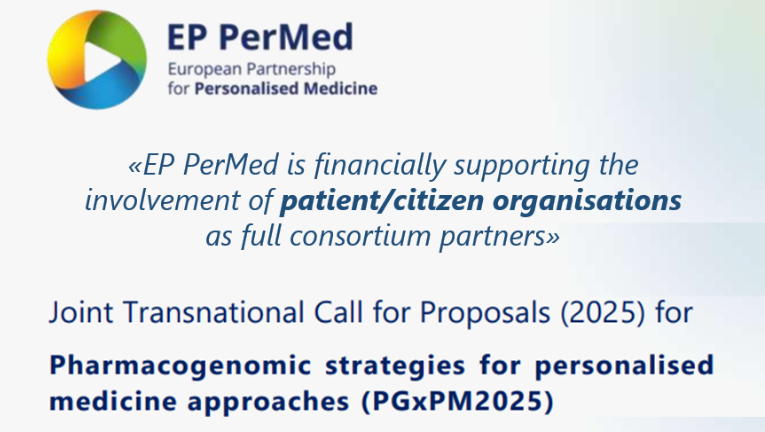
Değerli Araştırmacılar,
Kişiselleştirilmiş Tıp için Avrupa Ortaklığı ile (European Partnership for Personalised Medicine-EP PerMed), kişiselleştirilmiş tıp alanındaki araştırmalara destek verilmesi, sağlık sisteminde bu yaklaşımın yaygınlaştırılarak, güçlü ve sürdürülebilir sağlık sistemlerinin oluşturulması hedeflemektedir.
EP PerMed projesi 2025 yılı çağrısı Aralık ayında başvuruya açılmış olup, 24 ülkeden 35 fon kuruluşu çağrıda yer almaktadır. “Pharmacogenomic strategies for personalised medicine approaches (PGxPM2025)” başlıklı 2025 yılı çağrısının 1. aşama uluslararası başvuruları 18 Şubat 2025 (14:00 CET) tarihinde sona erecektir.
Tüm hastalık alanları çağrı kapsamına dahil olup, çağrıda çok ortaklı uluslararası konsorsiyumlar tarafından sunulacak olan ve kişiselleştirilmiş tıp yaklaşımını somut şekilde ortaya koyabilen translasyonel özellikte projeler desteklenecektir.
Kuracağınız uluslararası konsorsiyumlara hasta organizasyonlarının da dahil edilmesi beklenmektedir.
-
Bu organizasyonların konsorsiyuma katılımı ve katkı boyutu proje özelinde değişebilir. Proje başvurularında hasta organizasyonlarının katılımları gerekli bulunmuyorsa mutlaka açıklanmalı ve gerekçelendirilmelidir.
-
Konsorsiyumlarda yer alacak olan hasta organizasyonları ortaklık kapsamında ayrılmış olan fondan (≤50,000 Avro, 3 Yıl süresince) faydalanabilirler.
-
Bu organizasyonların projelerde yer alması ve fon talep etmesi durumunda Ek-2’nin dikkate alınması ve Ek-6’nın doldurulması gerekmektedir.
İlgili ortaklığı, Ufuk Avrupa sayfasından ve Ortaklığın Uluslararası Resmi İnternet Sayfasından takip edebilirsiniz.
Bu ortaklık kapsamındaki uluslararası konsorsiyumlarda yer alarak, kişiselleştirilmiş tıp alanındaki kanıt temelli ve çözüm odaklı süreçlerin bir parçası olma fırsatı yakalayabilirsiniz.
MSCA COFUND 2025 ÇAĞRISI AÇILDI!
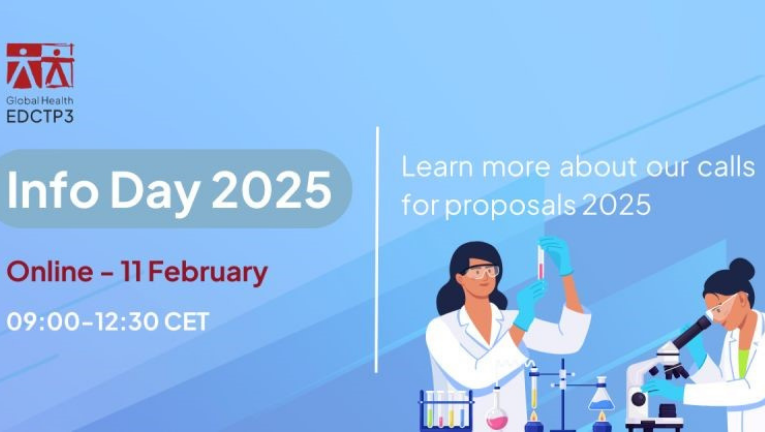
Değerli Araştırma Bursu Veren Kuruluş Temsilcilerimiz,
Marie S. Curie Alanı (MSCA) altında yer alan COFUND çağrısı, hâlihazırda araştırma projelerine yönelik burs ve destek mekanizması bulunan ya da böyle bir program oluşturmak isteyen kuruluşların bölgesel, ulusal ve uluslararası burs programlarının oluşturulması veya var olan programlarının desteklenmesi amacıyla araştırma bursu veren kuruluşlara ek fon sağlanmasını hedeflemektedir.
Proje önerileri doktora sonrası araştırmacıları destekleyen burs programlarını ya da doktora öğrencilerini destekleyen burs programlarını ek olarak desteklemek üzere sunulabilir.
COFUND çağrısına başvurarak ek fon talep edilecek burs programının proje önerisi içerisinde; genel yapısı, başvuru prosedürleri, başvuruların değerlendirilme süreci, yerel, bölgesel ve tüm Avrupa Araştırma Alanı'na katkıları hakkında detaylı bilgi sunulması beklenmektedir.
Proje önerileri araştırmacıların dolaşımını iki yönde destekleyebilir:
-
Türkiye’den yurt dışına gidiş yönünde
-
Yurtdışından Türkiye’ye geliş yönünde
Burs programının süresi en fazla 60 aya kadar olabilmektedir. Program kapsamında desteklenecek projelerde çalışacak araştırmacılara ise çalışmaları kapsamında en az 3 ay süre ile destek sağlanmak zorundadır. COFUND projesi kapsamında desteklenen araştırmacılar MSCA alanının uluslararası dolaşım (mobility) koşuluna uymak durumundadır. Bu koşula göre araştırmacılar araştırmalarını sürdürecekleri ülkede son 3 yıldır 12 aydan fazla bulunmamış olmalıdır.
2025 yılı MSCA-COFUND çağrısı beklenenden erken bir tarih olan 23 Ocak 2025 tarihinde açılmış, 24 Haziran 2025 tarihinde kapanması öngörülmüştür. Bu çağrıya da 101,80 Milyon Avro bütçe ayrılmıştır.
MSCA-COFUND proje önerisi sunumu 'Funding and Tenders Portal' üzerinden yapılmaktadır. Avrupa Komisyonu güncel dokümanları bu portal üzerinden duyurdukça, MSCA-COFUND web sayfamıza yeni dokümanlar eklenecektir.
Şu an için yeni yayınlanan ve COFUND çağrısına dair güncel bilgiler içeren MSCA 2023-2025 Çalışma Programı dikkatinize sunulmaktadır.
Çağrı hakkında detaylı ve güncel bilgi için web sayfamızı takip ediniz.
Proje önerisi yazma planı yapmanız halinde mutlaka MSCA Türkiye Ulusal İrtibat Noktaları ile irtibata geçiniz, başvuru ile ilgili detaylı bilgi alınız. Görüşme taleplerinizi ve sorularınızı ncpmobility@tubitak.gov.tr adresimize iletebilirsiniz.
ERC BAŞ ARAŞTIRMACILARIMIZDAN ÖZGÜR ATALAY ERC 2024 PROOF OF CONCEPT ÇAĞRISINDA DESTEKLENMEYE HAK KAZANDI
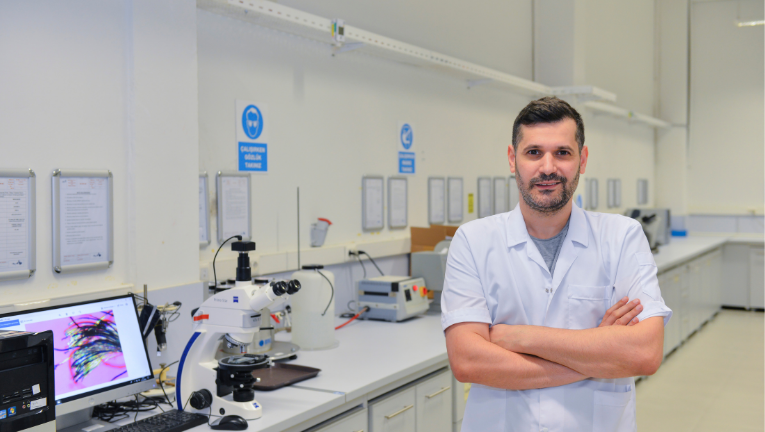
ERC baş araştırmacılarımızdan İstanbul Teknik Üniversitesi'nden Doç. Dr. Özgür ATALAY'ın "TexSoRVA: Sanal Gerçeklik Uygulamaları için Tekstil Tabanlı Yumuşak Robotik Sistemler" isimli projesi, ERC 2024 Proof of Concept çağrısı kapsamında (ERC-2024-PoC çağrısının ikinci kapanış tarihi kapsamında) 150.000 Avro ile desteklenmeye hak kazanmıştır.
Proje kapsamında Doç. Dr. Özgür ATALAY TexSoRVA adı verilen yenilikçi bir teknoloji geliştirilerek sanal gerçeklik (VR) deneyimlerinin daha gerçekçi hale getirilmesi hedeflenmektedir. TexSoRVA, giyilebilir bir robotik eldiven olarak tasarlanmıştır ve bu eldiven, kullanıcının hareketlerini izleyip dokunsal geri bildirimler sunarak VR dünyasında daha etkileşimli bir deneyim sağlamayı amaçlamaktadır. Ayrıca, TexSoRVA'nın fiziksel terapi ve spor gibi farklı alanlarda da kullanılması planlanmaktadır. Cihazın, geleneksel büyük ve ağır parçalar yerine ince ve esnek bir tasarımla tüm gerekli işlevleri yerine getirmesi hedeflemektedir.
Avrupa Araştırma Konseyi (Europen Research Council - ERC) öncül araştırma projelerini ve bu projeleri gerçekleştirecek bilim insanlarını sadece bilimsel mükemmeliyet kriterine göre değerlendirmekte ve özellikle çok disiplinli, disiplinlerarası, yeni fikirler ve alışılmadık yenilikçi yaklaşımlar içeren projeleri desteklemektedir. Proof of Concept (Kavram Kanıtı) çağrıları kapsamındaki projeler, ERC tarafından daha önce desteklenen baş araştırmacıların ERC projelerine ek olarak, projelerin ticari/sosyo-ekonomik potansiyelini doğrulayacak, fikirlerinin ticarileşmesine katkıda bulunacak ilave çalışmalar için verilmektedir.
Doç. Dr. Özgür ATALAY, daha önce ERC-2021-StG çağrısında "TEXWEAROTS: Algılama, Hareket Sağlama ve Kendini Güçlendirme Özelliklerine Sahip Tekstil Tabanlı Giyilebilir Yumuşak Robotik Sistemler" isimli projesi ile 1,5 milyon Avro destek almayı başarmıştı. Hala İTÜ ev sahipliğinde devam etmekte olan TEXWEAROTS Projesi kapsamında, tekstil teknolojisi ile robotik biliminin bir araya getirildiği tekstil temelli robotik yapılar üretilmesi ve bu yapıların kas güçsüzlüğü yaşayan bireylerin tedavisinde kullanılması hedeflenmektedir.
ATALAY'ın PoC projesi hazırlık aşamasında TÜBİTAK ERC Baş Araştırmacı Geliştirme Programı - EBAG kapsamında desteklenmiştir.
ERC'nin ilgili haberine buradan ve çağrının bir önceki kapanış tarihi kapsamında desteklenen tüm projelere buradan ulaşabilirsiniz. Çağrının birinci kapanış tarihinde Koç Üniversitesi'nden Dr. Öğr. Üyesi Levent BEKER desteklenmeye hak kazanmıştı.
Araştırmacımızı ve ev sahibi kurumunu tebrik eder, başarılarının devamını dileriz.
NETZEROCİTİES ÜÇÜNCÜ “İKİZ ŞEHİRLER” ÇAĞRISIDA 3 BELEDİYEMİZ DESTEKLENDİ!
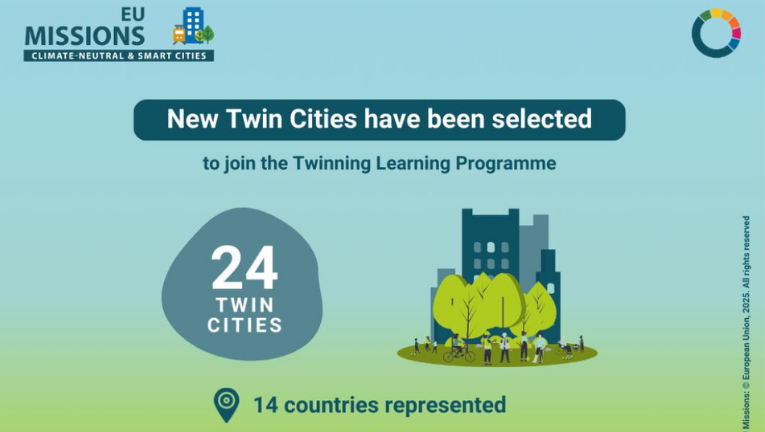
İkiz Şehirler Öğrenme Programı, üçüncü çağrısı, programa katılan Pilot Şehirler ve onları örnek alacak İkiz Şehirler arasında bilgi aktarımını ve kapasite geliştirmeyi amaçlayan 17 aylık bir program niteliğinde olup, değişimin merkezinde deneyimlerden öğrenme yer almaktadır. Şehirler hedeflerine ulaşmalarına yardımcı olmak adına birinci sınıf uygulayıcılardan ve uzmanlardan destek alabileceklerdir. Program; Avrupa'da iklim nötrlüğü hedeflerine ulaşmak için yeni yaklaşımları test etmek adına seçilen 3. Aşama Pilot Şehirler ile 2. Aşama Pilot şehirlerden bazıları ile eşleşmek üzere seçilen İkiz Şehirler arasında bilgi paylaşımı ve iyi uygulamaların transferi için özel olarak hazırlanmış bir öğrenme programı niteliği taşımaktadır. Çağrıya 2050 öncesinde veya 2050 yılına kadar iklim nötrlüğü taahhüt eden AB üyesi ya da Asosiye ülkelerden (ülkemizden) #MissionCities'in parçası olmayan ve henüz İkiz Şehirler veya Pilot Şehirler Programlarının parçası olmayan şehirler başvuru gerçekleştirmiştir.
NetZeroCities tarafından toplam 3 aşamada çağrıya çıkılması planlanan program kapsamında açılan son çağrı olma niteliğini taşıyan üçüncü çağrıya (Twin City Cohort 3) başvurular 10 Eylül-31 Ekim 2024 tarihleri arasında başvurular gerçekleştirilmişti.
Avrupa genelinde 14 ülkeyi temsil eden şehirler, 17 ay boyunca, işbirliği ve bilgi alışverişi programın merkezinde yer alarak kendi yerel alanlarında uygulamalar gerçekleştirmek üzere Pilot Şehirlerden içgörüler ve başarılı yaklaşımlar elde edecek, iklim nötrlüğüne geçişlerini hızlandıracak ve Avrupa'nın ortak iklim hedeflerine katkıda bulunacak, ayrıca programı kolaylaştırmak ve iklim hedeflerine ulaşmalarına yardımcı olmak için dünya standartlarında uygulayıcılardan ve uzmanlardan destek alabileceklerdir.
14 ülkeden seçilen 24 şehir arasında Ufuk Avrupa Programı’na asosiye ülkelerden sadece beş belediye yer almakta olup, belediyelerden üçü ülkemizden seçilmiştir. Gaziantep Büyükşehir Belediyesi, Bandırma Belediyesi ve Menteşe Belediyesi’ni başarılarından dolayı tebrik ederiz.
Daha fazla bilgi için lütfen tıklayınız.
ERDERA 2025 ULUSLARARASI ORTAK ÇAĞRISI ÇEVRİMİÇİ BAŞVURU PLATFORMU
.png)
"Küçük moleküller ve biyolojik maddeler kullanılarak nadir hastalıklar için klinik öncesi tedavi çalışmaları - geliştirme ve doğrulama" başlıklı 2025 Uluslararası Ortak Çağrısı (JTC) için proje başvurularının sunulmasına yönelik platform artık resmi olarak kullanıma açıktır.
Platform şunları yapmanıza olanak sağlayacaktır:
-
Proje ortaklarının kayıtlarının yapılması ve gerekli tüm kişisel verilerin sağlanması
-
Nihai proje önerisinin eklenmesi
Platforma buradan ulaşabilirsiniz. Platformun işlevselliğine alışabilmek adına kayıtların erkenden gerçekleştirilmesi önemle tavsiye edilmektedir.
JTC 2025 iki aşamalı bir başvuru sürecini takip edecektir:
-
13 Şubat 2025: İlk aşama uluslararası başvurular için son tarih
-
9 Temmuz 2025: İkinci aşama uluslararası başvurular için son tarih
-
Fonlama kararlarının 2025 yılı Aralık ayına kadar alınması öngörülmektedir.
Daha detaylı bilgi için güncellenen çağrı dokümanlarına buradan ulaşabilirsiniz.
CBE JU BİRİNCİL ÜRETİCİLER ÇALIŞMA GRUBUNA BAŞVURMAYI UNUTMAYINIZ!
Bu çalışma grubunun odak noktası, birincil üreticilerin döngüsel biyo-tabanlı çözümleri ve yenilikleri hayata geçirirken karşılaştıkları zorlukları ele alırken, bir yandan da onların yeni ve yenilikçi döngüsel ve biyo-tabanlı değer zincirlerinin parçası olarak faydalanmalarını sağlamaktır.
Kimler başvurabilir?
-
Tüzel kişiliği olan birincil üreticiler veya kooperatifler ve danışmanlık hizmetleri gibi onlarla yakın çalışan kuruluşlar
-
Birincil üreticileri temsil eden bölgesel paydaşlar ve ağlar
-
Tarım, ormancılık, balıkçılık ve su ürünleri yetiştiriciliği sektörlerinde yeniliği teşvik eden kuruluşlar
Çalışma grubu, AB bölgeleri, alt sektörler ve farklı birincil üretim türleri arasında temsili sağlayan dengeli bir üyelik hedeflemektedir.
Nasıl başvurulur?
Niyet beyanı çağrısı, çalışma grubunun kurulmasına yönelik süreci ve özel kriterleri tanımlamaktadır.
-
Niyet beyanı çağrısında belirtilen prosedürü takip ediniz.
-
Başvurunuzu 28 Şubat 2025 öğlen 12.00'ye (CET) kadar gönderiniz.
Daha fazla bilgiye buradan ulaşabilirsiniz.
KİŞİSELLEŞTİRİLMİŞ TIP ALANINDA ULUSLARARASI ARAŞTIRMA VE İŞBİRLİĞİ FIRSATLARI
Kişiselleştirilmiş Tıp için Avrupa Ortaklığı ile (European Partnership for Personalised Medicine-EP PerMed), kişiselleştirilmiş tıp alanındaki araştırmalara destek verilmesi, sağlık sisteminde bu yaklaşımın yaygınlaştırılarak, güçlü ve sürdürülebilir sağlık sistemlerinin oluşturulması hedeflemektedir.
Ortaklık tarafından kişiselleştirilmiş tıp araştırmalarını ve bu yaklaşımın uygulamaya geçmesini desteklemek amacıyla önemli çağrılar açılmıştır ve açılması planlanmaktadır. Bu ortaklık kapsamındaki uluslararası çağrılarda yer alarak, kişiselleştirilmiş tıp alanındaki kanıt temelli ve çözüm odaklı süreçlerin bir parçası olma fırsatı yakalayabilirsiniz.
-
EP PerMed 2025 yılı uluslararası ortak çağrısı
-
“Pharmacogenomic strategies for personalised medicine approaches (PGxPM2025)” çağrısı ile yeni farmakogenomik belirteçlerin belirlenmesi, validasyonu ve farmakogenomik stratejiler kullanılarak kişiye özgü tedavi yaklaşımının şekillendirilmesi amaçlanmaktadır.
-
Başvurular 18 Şubat 2025 tarihine kadar devam edecektir.
-
Çağrıya yönelik olarak 23 Ocak 2025 tarihinde gerçekleşecek olan bilgi gününe katılım sağlamak için kayıt yaptırabilirsiniz.
-
Konsorsiyum kurmanıza yardımcı olacak ortak arama platformundan yararlanabilirsiniz.
-
Kişiselleştirilmiş tıp alanında desteklenen proje bilgilerinin yer aldığı proje veri tabanından faydalanabilirsiniz.
-
-
EP PerMed-EIT Sağlık Çağrıları
Kişiselleştirilmiş tıp alanında çalışan start-up’lar, araştırmacılar ve başlangıç aşamasındaki takımlar için hasta bakımını iyileştirecek inovasyonların geliştirilmesi, validasyon çalışmaları ve pazar hazırlığı süreçlerinin hızlandırılması amacıyla iki farklı çağrı başvuruya açılmıştır.
-
Fast Track Validasyon Programı: Kişiselleştirilmiş tıp alanının gelişmesi amacıyla, projelerin daha yüksek teknolojilere erişmesini sağlamak ve pazara hazır hale getirilebilmek için validasyon çalışmaları desteklenecektir.
-
Başvuru süreci ve önemli bilgilere link üzerinden erişebilirsiniz.
-
-
Venture Creature Programı: Bu program ile kişiselleştirilmiş tıp alanındaki erken dönem girişimciler ve takımlar desteklenecek olup, mentor desteği, iş modellerinin geliştirilmesi ve müşteri keşif süreçleri ile inovasyon ve ticarileşme arasında bağın kurulması hedeflenmektedir.
-
Başvuru süreci ve önemli bilgilere link üzerinden erişebilirsiniz.
-
-
Ağ Oluşturma Desteği Çağrısı
Ortaklık kapsamında, uluslararası işbirliklerini güçlendirmek amacıyla Mayıs 2025 tarihinde networking support çağrısı açılacaktır.
-
Çağrı ile ilgili ayrıntılar duyurulacak olup, gelişmeleri çağrının internet sayfası üzerinden takip edebilirsiniz.
EP PerMed Ortaklığı ile önemli bilgi ve dokümanlara Ufuk Avrupa sayfasından ve Ortaklığın Uluslararası Resmi İnternet Sayfasından ulaşabilirsiniz.
Ufuk Avrupa Sağlık Kümesi kapsamında açılan tüm çağrı bilgileri, etkinlik ve ortak arama duyuruları vb. haberlerin tarafınıza e-posta ile iletilmesi için sağlık alanını seçerek, E-bültene kayıt yaptırabilirsiniz.
NANOBIO4CAN: NANOBİYOTEKNOLOJİ İLE KANSER ARAŞTIRMALARINDA YENİLİKÇİ YAKLAŞIMLAR DOKTORA SONRASI ARAŞTIRMACI DESTEĞİ ÇAĞRISI NİSAN'DA!
NANOBIO4CAN, Sabancı Üniversitesi Nanoteknoloji Araştırma ve Uygulama Merkezi (SUNUM) liderliğinde yürütülen, kanser araştırmalarında yenilikçi terapötik yaklaşımlar geliştirmeyi hedefleyen bir doktora sonrası araştırma ve eğitim programıdır.
TÜBİTAK Marmara Araştırma Merkezi (TÜBİTAK-MAM), Koç Üniversitesi Translasyonel Tıp Araştırma Merkezi (KUTTAM) ve İzmir Biyotıp ve Genom Merkezi (IBG) ile iş birliği içinde yürütülen proje, Avrupa Komisyonu ve TÜBİTAK tarafından HORIZON-MSCA-2022-COFUND-01 çağrısı kapsamında finansal olarak desteklenmektedir.
-
Proje Süresi: 1 Kasım 2023 - 31 Ekim 2028 (60 ay)
-
Hedef: 24 adet doktora sonrası araştırmacının, nanobiyoteknoloji alanında 24 aylık süreli iş sözleşmesiyle istihdam edilmesi (araştırmacıların çağrı kapanış tarihine dek son 3 yıl içinde 12 aydan fazla Türkiye'de bulunmamış olması gerekmektedir)
-
Çağrı Takvimi: 1. çağrı kapanmış olup, aşağıda ayrıntıları yer alan 2. çağrı takvimine göre 12 araştırmacı istihdam edilecektir
Programın Amacı ve Öncelikleri
NANOBIO4CAN, kanser araştırmalarında ilaç geliştirme, hedefleme sistemi geliştirme, dağıtım sistemleri ve test ve doğrulama sistemleri gibi araştırma öncelikleri doğrultusunda:
-
Uluslararası ağ oluşturma,
-
Sektörler arası hareketlilik,
-
Disiplinler arası iş birliği fırsatları sunar.
Bursiyerlerin akademik kariyerlerine girişimcilik becerilerini eklemeleri, araştırma çıktılarının ticarileştirilmesi ve teknolojilerinin lisanslanması için yol haritaları oluşturulması teşvik edilir.
2. Çağrı Takvimi
-
1-28 Şubat 2025: Ön başvuruların toplanması
-
3-17 Mart 2025: Aday ve danışman eşleştirmeleri
-
1 Nisan 2025: İlk çağrının açılış tarihi
-
30 Haziran 2025: Son başvuru tarihi
-
1 Ağustos-15 Ekim 2025: Bilimsel değerlendirmeler
-
3-21 Kasım 2025: Mülakatlar
-
15 Aralık 2025: Nihai listenin duyurusu
-
1 Ocak 2026: İşe alım ve sözleşme imzalama
-
1 Nisan 2026: Nanobio4can programının başlangıcı
Ayrıntılar için tıklayınız.

